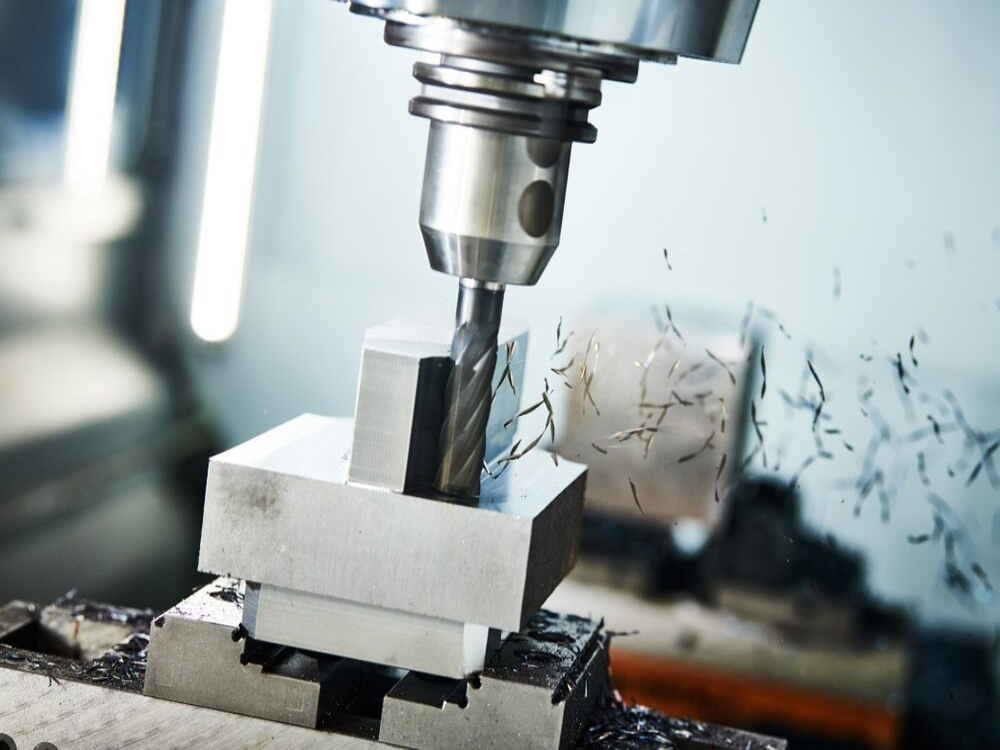Choosing the right material in CNC machining is often harder than designing the part itself. Every choice affects strength, heat resistance, surface finish, and cost. The wrong pick can slow production, damage tools, or raise expenses.
This guide explains how to choose CNC materials that balance performance, machinability, and budget. You’ll learn when metals or plastics work best, how material choice impacts cycle time and finish quality, and how to validate your selection before production.
Key Issues in CNC Material Selection
Most problems come from fuzzy requirements and over‑specs. Write the operating conditions first, then pick from a short, relevant list. This keeps choices tight and reduces rework in CNC Machining.
Define Use‑Case, Loads, And Environment
Start with clear, testable needs. Describe forces and temperature limits, target tolerance, mating parts, fluids, and any chemical resistance or corrosion resistance concerns. Capture expected life, service intervals, and failure modes. If a housing sees 90°C and mild solvents, many polymers qualify; if it sees 180°C or steam cycles, most do not. For outdoor parts, note UV and moisture. These notes translate directly into a short list of priority material properties to search against and prevent a random shopping trip through alloys and plastics. Documenting this list also makes supplier conversations faster and quotes more accurate.
Map Requirements for Candidate Families
With needs in hand, map to families: aluminum or titanium for high strength-to-weight ratio; stainless for salt or chemicals; Delrin (POM) or nylon for low friction; polycarbonate for impact and optics; PEEK for heat and chemicals. When two families fit, rank by risk: supply, finish, and test time. Keep two alternates to hedge against supply shocks.
Main Factors to Consider in CNC Materials
Focus on the attributes that drive success: mechanical strength/stiffness, hardness/wear, thermal limits, and coefficient of thermal expansion, plus special electrical or chemical needs.
Mechanical And Thermal Priorities
Tensile strength, hardness, and toughness are the primary attributes that determine whether a component will withstand load and wear, while thermal behavior and CTE will inform you if the component stabilizes in shape as it warms. For instance, metals such as aluminum 6061 are able to balance strength and cost efficiently; yet, aluminum 7075 increases strength while reducing machinability; tool steels give wear life at the expense of more machine time. The story is different with plastics: PEEK retains its properties above 200°C; polycarbonate is impact resistant, however, it is prone to scratching; nylon softens when heated. Rank these before anything else, then fit geometry and tolerances accordingly.
Corrosion And Regulatory Needs
If there are splashes, salt, or sterilants, it is better to go for stainless (e.g., 316) rather than general grades or switch to PEEK or PTFE for the most aggressive media. Copper and brass are great for electrical conductivity, while POM, PC, and PTFE are the most common materials for insulation. Regulated spaces (food, medical) may add finish or polymer requirements; capture those early so your shortlist stays valid.
How Do Cost, Availability, And Lead Time Compare?
Relative costs are consistent: 6061 and POM are budget‑friendly; 7075, brass, and PC cost more; stainless and PEEK sit higher. Stock and availability shift with market cycles—check early to protect lead time.
Price Tiers And Stock Availability
Use the part’s must‑have properties to choose the lowest viable tier, then verify stock sizes. If bar or plate sizes don’t match, you’ll pay in waste and machining time. Keep one plastic and one metal fallback ready in case sourcing slips.
Lead Time And Supply Risk Checks
Ask suppliers about mill runs, cut‑to‑size delays, and certs. Long or uncertain supply favors robust alternatives like aluminum 6061 or common stainless. For urgent builds, prioritize standard grades and thicknesses to reduce quoting and cutting delays; this can trump minor cost vs performance gains.
Quick Material Shortlist Guide For Common Needs
| Requirement | Metals (examples) | Plastics (examples) | Pros | Watch‑Outs |
| Light + strong | Al 6061, Al 7075, Ti | PC, PA (nylon) | Weight savings | Ti/7075 lower machinability |
| Corrosion/chemicals | SS 316, Ti | PTFE, PEEK | Harsh environment ready | Cost and lead time |
| Tight tolerances | SS 303/304, Al 6061 | POM (Delrin (POM)) | Dimensional stability | Moisture in some plastics |
| Impact/cosmetics | Brass, Al 6061 | polycarbonate | Finish friendly | PC scratches without coating |
| Heat >120°C | 17‑4, Inconel | PEEK, PEI | High‑temp performance | Expensive materials/feeds |
When Should You Choose Metals Over Plastics?
Use metals for high loads, heat, wear, or threaded durability. Use plastics for weight, insulation, and corrosion immunity—especially where chemical or moisture exposure is constant.
Overview of Common CNC Metals
Aluminum is the default for many parts: aluminum 6061 is easy to cut and finish; aluminum 7075 adds strength for weight‑critical parts. Steels add wear life and stiffness; stainless grades add corrosion resistance but machine more slowly. Brass machines cleanly and finishes well, ideal for cosmetic fasteners and fittings. Titanium wins when extreme strength-to-weight ratio and biocompatibility matter, but needs conservative feeds and robust tooling plans.
Overview of Common CNC Plastics
ABS is cheap and forgiving for shape/prototype tasks. Nylon offers wear resistance but absorbs moisture. Delrin (POM) gives low friction and excellent dimensional stability for precision bushings. Polycarbonate provides high impact resistance and optical clarity with coatings. PEEK stands alone for combined heat and chemical duty, often replacing metal at a higher part cost but shorter cycle time.
What About Machinability And Tool Wear Trade‑Offs?
Higher machinability usually means faster cycles, better finish, and lower tool spend. Difficult materials increase setup detail, feeds/speeds care, and cost.
Machinability Indices And Programming Impact
Materials like aluminum 6061 and brass cut quickly with wide process windows and forgiving chip control, which lowers program risk and time. Alloys like titanium or hardened steels need lower feed rates, robust toolpaths, and more coolant, pushing cycle time up. In CNC Machining work, expect to trade roughing strategies and cutter choices for accuracy and finish. These realities often outweigh small property advantages in low‑risk applications.
Tool Life, Heat, And Surface Finish Outcomes
Easy‑cut alloys help tools live longer and hold a finer surface finish. Heat‑resistant materials hold properties in service but create cutting heat that harms edges, so plan for coated tools, balanced stepovers, and finish passes. If the finish spec is tight, consider bead‑blast or polish‑ready materials to reduce downstream work.
How Do Tolerances And Stability Affect Material Choice?
Tighter features push you toward stable metals and low‑CTE plastics; moisture‑sensitive resins need design margin or conditioning.
Tolerances, CTE, And Dimensional Stability
Low coefficient of thermal expansion helps parts stay within spec as they warm during cutting and in service. Stable choices include common stainless and Delrin (POM); some plastics drift more with temperature swings. If the assembly stack‑up is tight, choose materials and finishes that don’t add much distortion during machining or post-processing.
Moisture Uptake And Creep In Plastics
Hygroscopic polymers like nylon absorb water and change dimensions, while long‑term loads can cause creep. For precision fits, pivot to POM or consider PEEK if heat and chemical duty exist. Bake‑drying and conditioning help, but the best fix is choosing a polymer with low moisture uptake for your tolerance class.
What Surface Finishes Drive Material Decisions?
Finishes can enable or block an otherwise perfect material. Pick base materials that accept your target finish and achieve spec without heroic effort.
Finish Compatibility
Aluminum anodizes beautifully and is a great protector for the surfaces; brass and some steels can be polished to a mirror finish; stainless can be passivated; polycarbonate, most of the tim,e needs coatings to be scratch-free. Not every base is the same: anodize is for aluminum, not for steels; nickel plate goes better with stainless than with aluminum. Check finish + material early to avoid surprises.
Cosmetic Versus Functional Surface Targets
If a part must look premium, brass and anodized aluminum offer reliable shine and uniformity. Functional targets—low friction, heat shedding, or corrosion protection—may push you to bead‑blast, hard‑coat, or passivate instead. Let the “job to be done” guide your base material rather than forcing a finish onto a poor substrate.
How to Validate Material Choices with Prototyping
Prototype with the closest practical grade, test the riskiest property, and adjust. Don’t wait for pilot runs to discover a mismatch.
Prototype Strategy: From ABS To 6061
If geometry learning is the goal, print or machine in ABS, then move to aluminum 6061 to check strength and threads. For high‑temp or chemical duty, sample with PEEK only when data demands it; otherwise, down‑select with PC or POM first to keep speed and cost in check. This staged prototyping reduces waste while surfacing real constraints.
Test Plans
Test what can fail: bend/impact for toughness, soak/temperature for environment, and torque/pull‑out for fasteners. Record exact conditions, photos, and quick notes so material swaps carry forward. Small fixtures and coupons are cheap ways to learn before committing to the final grade.
Where Can You Get Fast CNC Material Help?
Use a vendor that publishes supported materials, finishes, and tolerances, and that returns quotes quickly with DFM notes. Xmake lists metals and plastics, surface options, and shows CNC services you can request.
What You Get From Xmake’s CNC Services
You can review supported metals like aluminum, steels, and copper alloys, and plastics including ABS, nylon, polycarbonate, POM, and PEEK, alongside finishing choices (anodizing, plating, polishing). For an overview and quotes, see Xmake’s CNC machining services.
How To Share Requirements For Better Results
Upload CAD with a short note highlighting environment, loads, tolerance, finish, and schedule. If you already prefer 7075 but can accept aluminum 6061, say so it speeds quoting and protects lead time. If milling is primary, you can also review Xmake’s CNC milling materials selection to confirm availability.
What Are The Best Practices And Common Pitfalls?
Best practice is disciplined simplicity: meet the need with the lowest‑cost, readily available material that clears risk. Pitfalls include spec creep, late finish checks, and ignoring supply.
Avoid Overengineering And Spec Creep
If 6061 meets the goal, resist jumping to stronger alloys “just in case.” Every upgrade ripples into machinability, tool wear, and cost. Tie every spec to a real risk and remove anything that doesn’t change the outcome. This both saves money and keeps schedules aligned with production capacity.
Document Assumptions And Re‑Use Learnings
Keep a simple “evidence pack”: loads, temperatures, media, photos, pass/fail notes, and supplier feedback. On the next project, you’ll start with a proven shortlist, faster quotes, and fewer surprises—turning material selection from a hurdle into a habit.
Conclusion
Material selection gets easier when you focus on the few things that matter, validate early, and keep choices practical. Define the job, pick properties, check availability and finishes, then prove it with a quick prototype. When in doubt, start with common alloys or plastics and trade up only when tests say you must. That approach reduces time, cost, and risk across CNC Machining work. If you need a sanity check or a fast quote, Xmake’s CNC pages list supported materials and finishes and make the next steps straightforward.
FAQ
How do I prioritize properties without overcomplicating?
List loads, temperature, environment, and life first. Map those to three to five must‑have properties and pick the cheapest, most available grade that meets them. Use prototypes to confirm.
What if my finish requirement conflicts with my material?
Change the base material rather than forcing a finish onto an incompatible substrate. For example, anodize likes aluminum; bright polish favors brass; aggressive plating may push you to stainless.
How can I avoid schedule slips from material sourcing?
Ask about stock sizes, mill lead times, and certs during design. Keep two alternates one metal, one plastic so you can pivot without redesigning.

